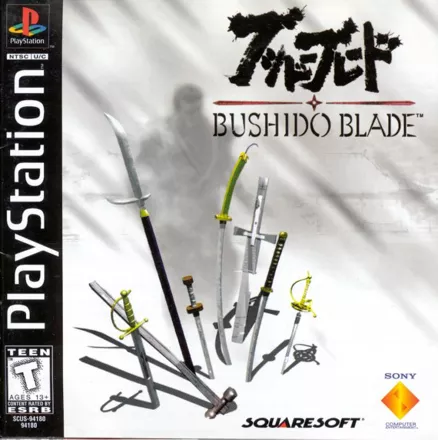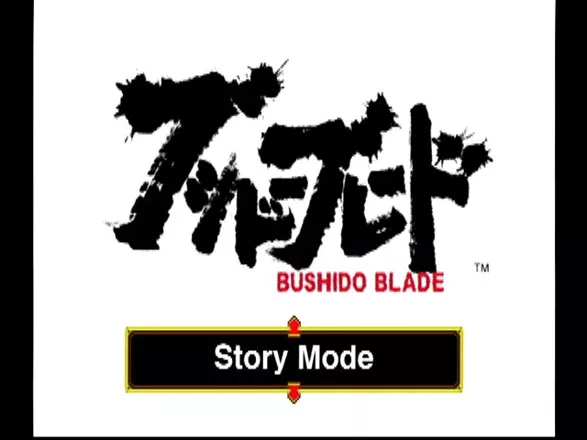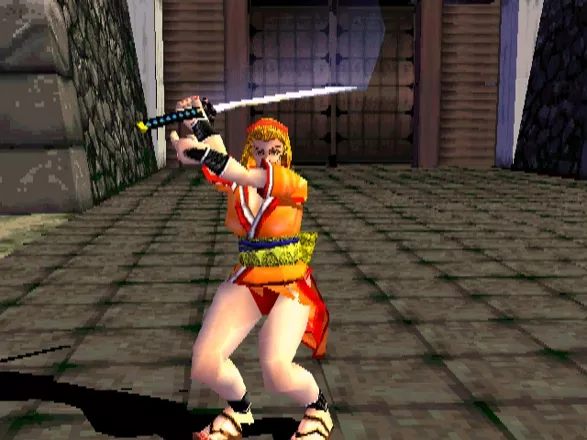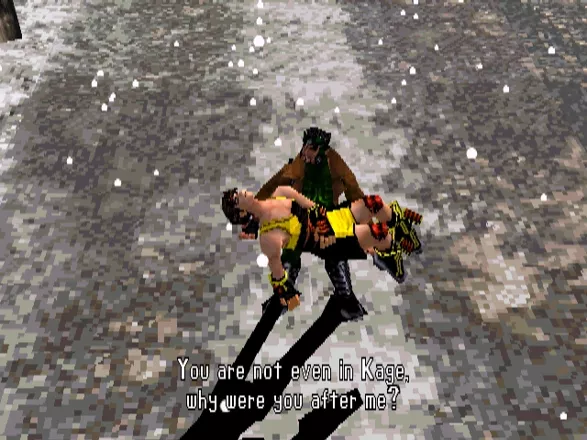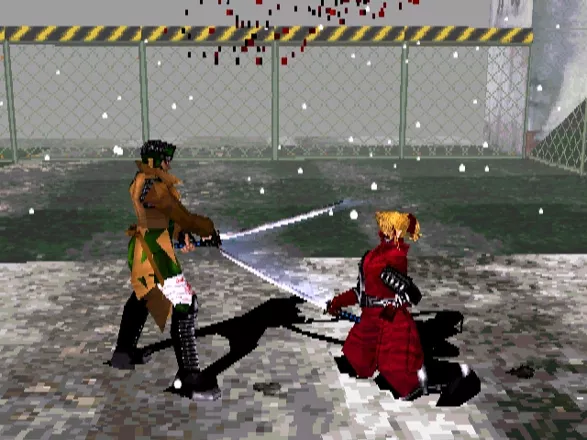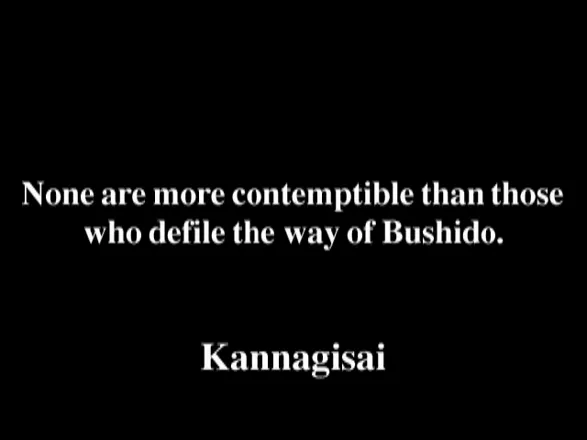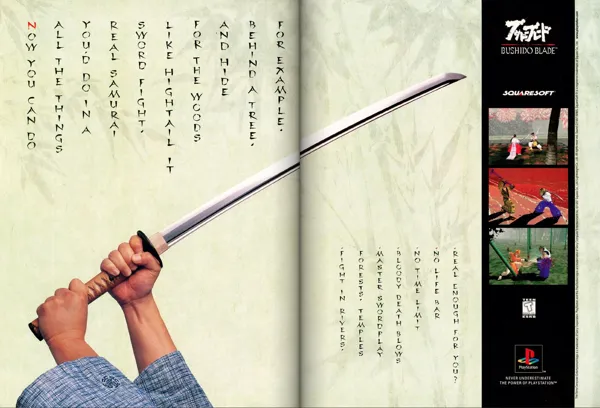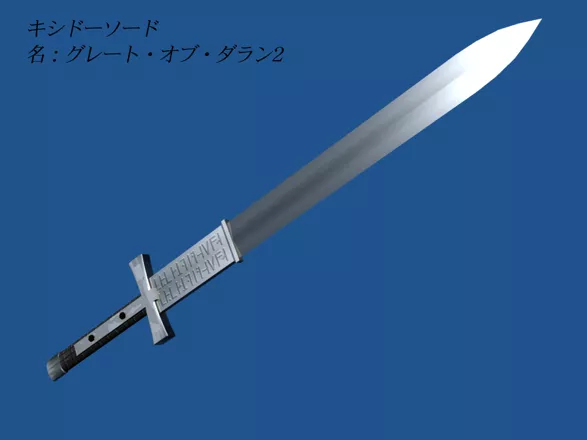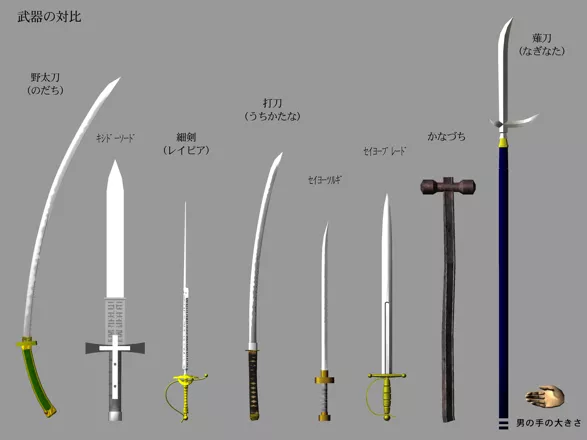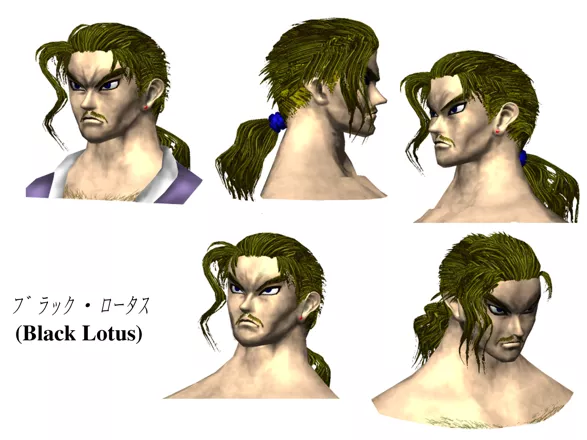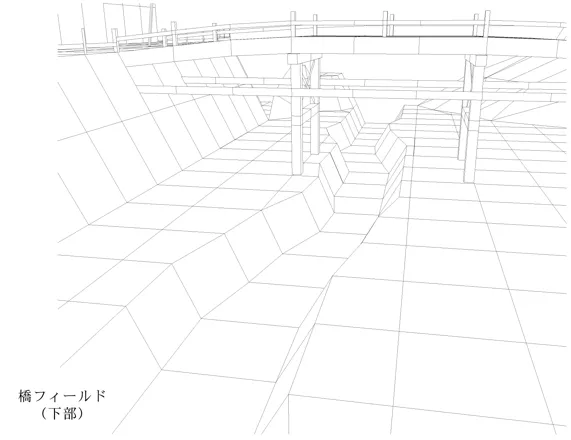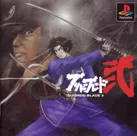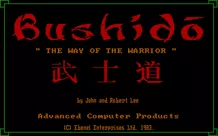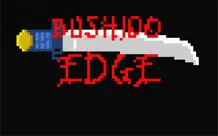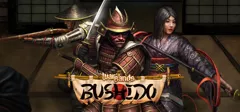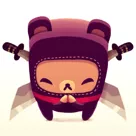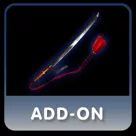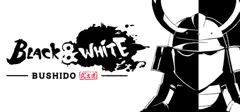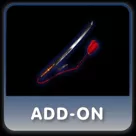Bushido Blade
Description official descriptions
The Bushido code of honor governs the actions of the Samurai and sets a code of ethics for use in fighting. Sometime in the 20th century, a group of Narukagami ninja, each proficient in a different style, find themselves in a battle to regain their honor in the fighting ring.
Bushido Blade is a versus fighting game with several unique features. It does away with health bars, special meters, and other traditional gimmicks and allows for battles to be won with a single hit. Players select from among six ninja, each of a different fighting style and attributes. Players also choose equipment from among eight weapons, including Japanese swords, European blades, naginata and a sledgehammer.
Battles take place in wide open areas in which combatants can run around as well as climb up and down. Some structures, like bamboo trees, can even be cut down. In the single player game, players can even run through the entire castle, picking a preferred fighting ground location. In addition to the single player story mode, there's a versus mode, a slash mode where you will be attacked by 100 generic ninja in one long corridor, a training, and a 'POV' mode, which allows players to play from first person, heightening the realism. The game's versus mode can also be played using two Playstations linked up.
Gameplay involves picking one of three stances, then attacking high, middle, or low. Directions while attacking change attacks, and attacks can be combo'd. Player damage is location based, with hits to arms often making them useless, hits to legs crippling, and hits to heads and clean across the torso being mortal. The use of stances and the easily achieved one hit kills make Bushido Blade one of the most deadly, and therefore realistic, weapon fighters around.
Spellings
- ブシドーブレード - Japanese spelling
Groups +
Screenshots
Promos
Videos
Add Trailer or Gameplay Video +1 point
See any errors or missing info for this game?
You can submit a correction, contribute trivia, add to a game group, add a related site or alternate title.
Credits (PlayStation version)
115 People (100 developers, 15 thanks) · View all
| Testers | |
| Assistant Producer | |
| Producer | |
| Marketing Product Manager | |
| Manual Editor | |
| Manual Designer |
|
| Quality Assurance Manager | |
| Assistant QA Manager | |
| QA Supervisors | |
| Lead Testers | |
| Motion Assist | |
| Sound (ARIKA) | |
| [ full credits ] | |
Reviews
Critics
Average score: 78% (based on 23 ratings)
Players
Average score: 3.7 out of 5 (based on 46 ratings with 1 reviews)
The Good
It goes without saying that the Japanese warfare arts have always exerted a remarkable level of fascination with audiences worldwide. All that honor-driven hoopla coupled with the disciplined handling of such noble weapons as swords and lances has a discreet yet powerful appeal that enhances the drama inherent in things as common as a duel to the death. Thus it's no wonder that the warrior rites and it's customs made their way to the videogame world as an alternative to the savage and unfocused western-styled action games. While one could say that all japanese action games incorporate the codes and doctrines to an extent, the first major series of games that happened to use the japanese samurai warrior setting and customs were the Samurai Shodown series, but their use of feudal Japan as the backdrop and it's focus on different bladed weapon disciplines instead of streetfighting could be merely attributed to a cosmetic choice, as the games still favor arcade mechanics and don't really incorporate the honorable traditions of bushido into the gameplay context.
Enter Bushido Blade: the first game that attempts to fully incorporate the Japanese warrior traditions and a realistic fighting model into a 3D fighting game.
The game sets itself on modern-day Japan, where a character belonging to an order of ninja assassins decides to leave their ancient ways and retire to continue perfecting his skills. Unfortunately for your selected character, the big bad boss of the order decides that no one gets out alive, so he sends everyone out to get you. And thus the game progresses as your standard tournament-styled fighter where you have to defeat the 5 other order members and then work your way up through the main man's henchmen and finally the big kahuna of the order himself. The pace is thus that of an old fashioned chambara (samurai swordfight) movie were your selected character is forced to kill his friends, lover and/or father (depending on which character you select) due to their vows of loyalty to the order and then sets out in a quest for revenge as he tracks down the main badass and shows him the pointy end of his sword, with all events told between fights via engine-based cutscenes.
The interesting aspects for the game are however in the fights, for each match the game incorporates the "ways of Bushido" meaning the samurai code of honor always applies. For instance: attack your opponent while he salutes you and you'll be kicked out of the game for being a dishonorable gaijin. Ditto if you attack him/her from the back, or while he's down on the ground. If a character decides upon an honorable death and poses himself for executionn it's your duty to end his life honorably. All these rules and more have to be taken into consideration when fighting in Bushido Blade and they become important aspects to consider when applied to the game's peculiar fighting engine. Following the concept of a realistic fighting game, Bushido Blade removes all sorts of health bars and status displays and instead uses a realistic hit detection system that translates such health endangering actions as receiving a katana swing to the head into just what you would expect: a one-hit-kill. But what if he hits you in the arm? Well congratulations, you can't use it anymore! And if he gets your legs? Better learn to fight on your knees pal! That's how fights are in Bushido Blade, where every hit counts and every mistake is a major fuckup.
If you don't think by now that this is one of the most interesting fighting games ever conceived just wait till you hear the rest. Want gameplay depth? 6 different characters each with their own speed/strenght stats aren't exactly impressive, but the when you add to that a collection of nearly 10 weapons to use including japanese classics as the Katana or the Naginata, as well as western broadswords and rapiers you have a broad range of possible fighter combinations. Plus while the game simply manages hits in a 3-button scheme (high, medium or low aimed hits) there are 3 possible stances to fight from, each modifying the standard moves accordingly and introducing their own rules for special moves that can be universal or character/weapon specific for a total of hundred+ moves. Plus how does having to contend with realistic hit delays and elements (such as wind and water that slows your character down) sound? Or more esoteric options like being able to run around the stages climbing to higher vantage points and using the different obstacles to your advantage? Or being able to throw sand into your opponents eyes and decimate bamboo fields with your slices Ninja Scroll-like?
And that's just the game's standard singleplayer story mode! The game comes appropiately loaded with a survival mode that has you facing off against hundreds of ninjas, plus a great vs mode that makes it one of the best multiplayer games around (since it effectively bypasses the psx's horrendous loading times), a training mode (with the appropiate wooden swords) and a great first person POV mode that provides a strikingly different experience while using the same mechanics.
In addition to that the game was blessed with excellent production values, thus the graphics (while dated for today's standards) are well detailed with great textures and absolutely gorgeous motion-captured animations (just look at the opening demos where each character performs different katas and try not to be impressed), plus the backgrounds are lovingly created settings that vividly recreate temple courtyards, bamboo groves, peaceful beaches and other areas all with your choice of day/night playtime that dramatically change the locations and adds different elements to the mix (like rain, snow, etc...). The music doesn't fall behind either and provides a distinct feel for the game by mixing serene yet dramatic arrangements based on japanese folk instruments with guitar riffs and other modern touches, very good stuff that captures the vibe of the game but also brings it's own brand of excitement to the table. Last but not least my kudos go to the interface designers that graphically emulated the discreet charm of the gameplay setting much like another classic of the pseudo-realistic fighting games: Budokan. The menus are discreet yet beautiful without using any sort of flashy wowness, weapon and character selection uses the character models as they formally salute you and even the loading screen consists of nothing but a white background with "Bushido Blade" written in the lower right corner. Plus the localization team didn't mess with the original design and kept the same look and feel while just translating the text and also did NOT (thank the gods!) dub the voices, choosing to merely subtitle them with a discreet, neutral font instead. Great way to treat a great game.
The Bad
The cgi cutscenes in the end are HORRIBLE! I guess this is what proves without a shadow of a doubt that this is really Lightweight's game, since I think Square would rather die than do these cutscenes on their own. The models are horrible, the animation is sluggish and they seem to be crappily compressed with all sorts of artifacts popping up when they play.
I never liked the block system which uses a block button that must be pressed EXACTLY at the same moment the opponent strikes... could never use it effectively.
The hidden extras are also IMPOSSIBLY hard to unlock and I could have done without the superhero costumes for some of the characters... I mean, there's a Zorro wanna-be in here!! I could also have used a little more gore, but I'm just being bitchy now.
The Bottom Line
A masterpiece of action gaming that provides an unique experience and deep gameplay while perfectly blending a fantastic setting and groundbreaking mechanics. Bushido Blade is the videogame equivalent of those super-suave solitary warriors that appear constantly in japanese samurai movies/novels/animés: Discreet, serene and honorable, but far more lethal and skilled than his big-mouthed, flashy counterparts. A must for the thinking action gamer.
PlayStation · by Zovni (10502) · 2004
Trivia
1001 Video Games
The PS1 version of Bushido Blade appears in the book 1001 Video Games You Must Play Before You Die by General Editor Tony Mott.
German index
On January 31, 2003, Bushido Blade was put on the infamous German index by the BPjS. More information about what this means can be found in the game group.
Japanese version
The original Japanese version actually has less blood than the western release. Originally "fatal" blows were indicated by a golden eyaculation followed by a flash instead of by blood.
Awards
- Electronic Gaming Monthly
- March 1998 (Issue 104) - Fighting Game of the Year Top Write-In (Readers' Choice)
Information also contributed by Xoleras.
Analytics
Upgrade to MobyPro to view research rankings and price history! (when applicable)
Related Sites +
-
Wikipedia: Bushido Blade
Information about Bushido Blade at Wikipedia
Identifiers +
Contribute
Are you familiar with this game? Help document and preserve this entry in video game history! If your contribution is approved, you will earn points and be credited as a contributor.
Contributors to this Entry
Game added by Ray Soderlund.
PS Vita, PlayStation 3, PSP added by Fred VT.
Additional contributors: Zovni, Alaka, DreinIX, Fred VT, Patrick Bregger, FatherJack.
Game added April 4, 2001. Last modified February 21, 2024.


